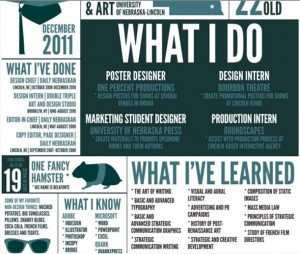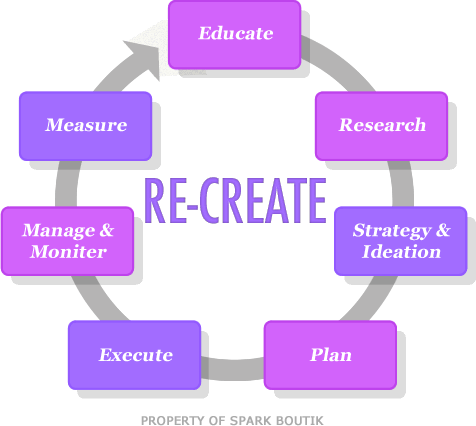
The construction of a resume is more of an art than a science. To build a great resume, you must partake in a difficult balancing act. On the one hand, you really want your resume to stand out amongst the hundreds of others. On the other hand, the manner in which it stands out must be: clever without being pretentious, cool without seeming insincere, and interesting without appearing desperate. On top of all that, the applicant must go about this process knowing that what appears unique and interesting to one employer, will come off as strange and gimmicky to another.
The truth of the matter is that there is no such thing as a perfect resume, but there are most certainly bad resumes. Bad resumes are those that are poorly written, poorly arranged, and just plain boring. While there are plenty of websites and books that can show you how to format your resume correctly, there are far fewer that can tell you how to give your resume some personality.
The first rule of resume creation is to know your audience. Today's job market is more complex then before. With many more emerging jobs in technology and web-based businesses, expectations for the traditional resume is dead. Careers at Facebook, Twitter, MySpace, and similar companies, for example, are some of the most sought-after. Decision makers for these companies clearly articulate that they look for bright, creative, industrious individuals. For someone that is trying to acquire one of those coveted social media jobs, this means, "Anything except a boring resume, please!" So how might an individual make their resume standout to someone at Facebook, Zynga, or Google?
First and foremost, your resume is a list of things that prove you have an appropriate amount of skill for the position you are seeking. You must list your education, your previous jobs, and your relevant skills. Essentially, anything that will prove to the reader that you would be great for the position. But don't stop there. You must turn your resume into an example of your impressive skillset to really excite employers. Here are a few examples to get you started:
1. YouTube Channel
Imagine a resume that, at first glance, appears to be a screenshot of a YouTube channel. Upon closer examination, however, the reviewer discovers that your picture is in the video box, your personal information is in the sidebar, and all of your work and education information is displayed as video comments. Awesome! Try it out.
 The construction of a resume is more of an art than a science. To build a great resume, you must partake in a difficult balancing act. On the one hand, you really want your resume to stand out amongst the hundreds of others. On the other hand, the manner in which it stands out must be: clever without being pretentious, cool without seeming insincere, and interesting without appearing desperate. On top of all that, the applicant must go about this process knowing that what appears unique and interesting to one employer, will come off as strange and gimmicky to another.
The truth of the matter is that there is no such thing as a perfect resume, but there are most certainly bad resumes. Bad resumes are those that are poorly written, poorly arranged, and just plain boring. While there are plenty of websites and books that can show you how to format your resume correctly, there are far fewer that can tell you how to give your resume some personality.
The first rule of resume creation is to know your audience. Today's job market is more complex then before. With many more emerging jobs in technology and web-based businesses, expectations for the traditional resume is dead. Careers at Facebook, Twitter, MySpace, and similar companies, for example, are some of the most sought-after. Decision makers for these companies clearly articulate that they look for bright, creative, industrious individuals. For someone that is trying to acquire one of those coveted social media jobs, this means, "Anything except a boring resume, please!" So how might an individual make their resume standout to someone at Facebook, Zynga, or Google?
First and foremost, your resume is a list of things that prove you have an appropriate amount of skill for the position you are seeking. You must list your education, your previous jobs, and your relevant skills. Essentially, anything that will prove to the reader that you would be great for the position. But don't stop there. You must turn your resume into an example of your impressive skillset to really excite employers. Here are a few examples to get you started:
The construction of a resume is more of an art than a science. To build a great resume, you must partake in a difficult balancing act. On the one hand, you really want your resume to stand out amongst the hundreds of others. On the other hand, the manner in which it stands out must be: clever without being pretentious, cool without seeming insincere, and interesting without appearing desperate. On top of all that, the applicant must go about this process knowing that what appears unique and interesting to one employer, will come off as strange and gimmicky to another.
The truth of the matter is that there is no such thing as a perfect resume, but there are most certainly bad resumes. Bad resumes are those that are poorly written, poorly arranged, and just plain boring. While there are plenty of websites and books that can show you how to format your resume correctly, there are far fewer that can tell you how to give your resume some personality.
The first rule of resume creation is to know your audience. Today's job market is more complex then before. With many more emerging jobs in technology and web-based businesses, expectations for the traditional resume is dead. Careers at Facebook, Twitter, MySpace, and similar companies, for example, are some of the most sought-after. Decision makers for these companies clearly articulate that they look for bright, creative, industrious individuals. For someone that is trying to acquire one of those coveted social media jobs, this means, "Anything except a boring resume, please!" So how might an individual make their resume standout to someone at Facebook, Zynga, or Google?
First and foremost, your resume is a list of things that prove you have an appropriate amount of skill for the position you are seeking. You must list your education, your previous jobs, and your relevant skills. Essentially, anything that will prove to the reader that you would be great for the position. But don't stop there. You must turn your resume into an example of your impressive skillset to really excite employers. Here are a few examples to get you started:


